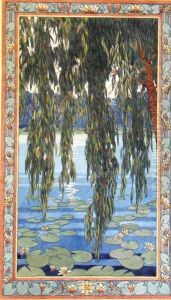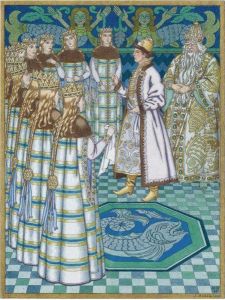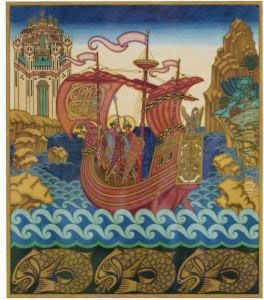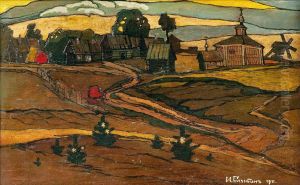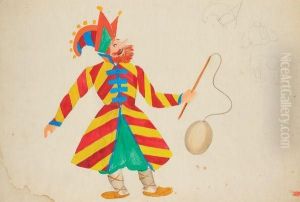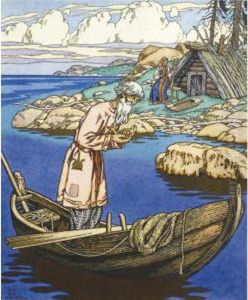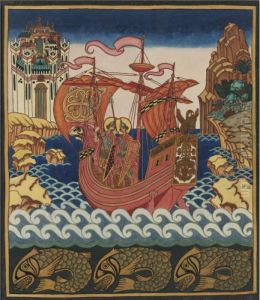Ivan Iakovlevich Bilibine Paintings
Ivan Iakovlevich Bilibine was a prominent Russian illustrator and stage designer who played a significant role in the Russian folklore revival of the early 20th century. Born on August 16, 1876, in Tarkhovka, near St. Petersburg, Russia, Bilibine was influenced by traditional Russian folk art and the Art Nouveau style.
During his education at the St. Petersburg Academy of Arts, Bilibine became enthralled with the rich traditions of Russian folklore and began to illustrate fairy tales, creating images that merged historical accuracy with a stylized decorative approach. His illustrations often featured a distinctive use of bold outlines and vibrant colors reminiscent of Russian folk costumes and crafts.
In 1899, Bilibine joined the 'World of Art', a Russian art movement whose members sought to break free from academic restrictions and incorporate more diverse, particularly historical and folk, artistic elements into their work. His artwork for such tales as 'Vasilisa the Beautiful' and 'The Firebird' garnered widespread acclaim, helping to renew interest in Russian mythology and folklore.
Bilibine's career was not limited to illustration; he also worked as a stage designer, bringing his unique style to the sets and costumes of various theatrical productions. His designs contributed to the visual lexicon of the Russian stage during a time of great innovation in theatre arts.
However, the political upheaval in Russia during the early 20th century affected Bilibine's career. Following the Russian Revolution, he emigrated to Egypt and later to France, continuing his work in the Russian émigré community. He eventually returned to his homeland in 1936, where he continued his work until his death on February 7, 1942, in Leningrad (now St. Petersburg) during the Siege of Leningrad in World War II.
Ivan Bilibine left a lasting legacy as a master illustrator whose work captured the spirit of Russian folklore. His illustrations remain influential and are still beloved for their beauty and cultural significance.


















